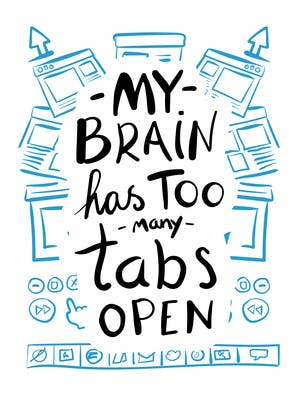We’re beginning to see more effects of increased stress on the workforce.
The “overwhelmed employee” trend was regarded by 65 percent of executives surveyed as an important or urgent one, according to insights from Deloitte’s survey published in March 2014.
Many don’t know how to handle it. Nearly half (44 percent) of executives said they are not ready to deal with this new workforce trend.
Thankfully, this may be easier to combat than many executives may suspect.
Here are a few signs to help identify employees on the path to becoming overwhelmed, and some tips for using training and development initiatives to turn things around:
Sign #1: An increase in sick days
Highly stressed employees take twice as many sick days as employees who report low stress levels, according to Towers Watson’s 2013/2014 Global Benefit Attitudes Survey.
“A third of respondents said they are often bothered by excessive pressure in their job and this can lead to higher instances of disengagement and absenteeism — clear indicators of low productivity in the workplace,” says senior consultant and well being specialist at Towers Watson, Rebekah Haymes, said in a press release.
Tip to combat: Schedule one-on-one training in any area with which your employees seem to be struggling. The key is to match each employee with another employee who has a strength they do not. Each person’s unique strengths will ensure both have something to contribute to the relationship.
Sign #2: Misunderstandings and errors
 Communication skills are on the decline, according to data from York College’s 2013 National Professionalism Survey Workplace Report, suggesting technology might be to blame.
Communication skills are on the decline, according to data from York College’s 2013 National Professionalism Survey Workplace Report, suggesting technology might be to blame.
Tip to combat: Technology can be a benefit or detriment, depending on its use in the workplace. If you use technology to improve internal communication, such as an instant messaging platform, collaboration and teamwork could improve significantly.
To reduce instances of miscommunication and errors, which leads to more stress for employees, utilize an instant messaging tool to enable employees to reach out to one another for immediate help, and clarify project details.
Sign #3: Disengagement or waning interest
If you notice your employees’ interest in their jobs seems to be waning, stress and lack of career development support may be driving disengagement. Without the opportunities to learn and grow within the company, they may lose sight of their career path.
More than half of respondents in Deloitte’s survey said their organizations were “weak” in helping employees manage their own development within their career.
Tip to combat: To help re-engage your employees, provide plenty of training resources they can use to develop their skills. They can learn skills both within and outside their current role, which will hopefully entice them to move up in your company instead of quitting and going elsewhere.
Ultimately, learning how others practice and have fine-tuned their task methods could make processes more efficient and less stressful for employees.
Sign #4: Unusual silence
Asking questions and discussion is a major part of the learning process. If you notice your employees seem unusually quiet during meetings, it might be a sign they are overwhelmed, but might be afraid to admit they need help.
Tip to combat: Use a forum where employees can pose and answer one another’s questions. Encourage employees to ask questions and recognize employees who go above and beyond to help one another out. You can also use this forum to identify your subject experts, so when employees are overwhelmed with projects, you can connect them with the best person.
Combating the “overwhelmed employee” trend could be easier than managers suspect. With the right learning and development strategies in place, employees could feel big burdens — like knowledge gaps, communication issues, and even feeling alone in what they do — lifted.
What are some ways you currently approach the “overwhelmed employee” trend?
